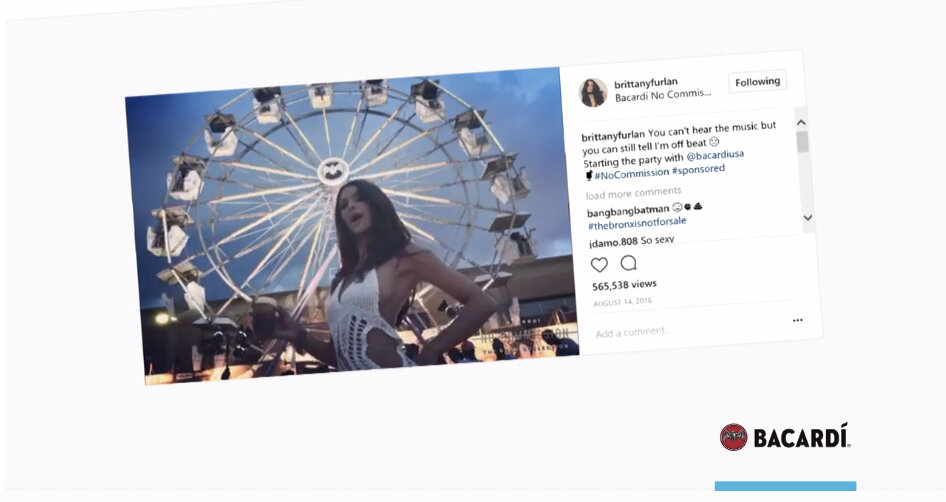Who Needs Websites When You’ve Got Facebook? Why WHOSAY’s Pivot Is Making Publishers Nervous
“I can buy an ad on ESPN.com or I can buy people who like ESPN on Facebook. It’s the same audience, and I don’t need ESPN’s permission to buy their audience on Facebook.”WHOSAY CEO Steve Ellis is not one to mince words.But the above quote is the key to the very unique business model that WHOSAY, which started life as Hootsuite-for-Celebrities, has pivoted to.The current model positions WHOSAY as a combination agency and distributor. “It’s called ‘influencer marketing’ now, but it’s really about the influence not the influencer,” notes Ellis, a New York-based Brit who founded WHOSAY back in 2010. The original model was working well until Facebook changed their algorithm to exclude most of a celebrity’s fan base. “I’ll bet that 20% of the total engagement on Facebook today is around influential and well known people,” notes Ellis. “But Facebook dialed down that organic reach from 100 percent of fans to only around 5 percent—that’s how many fans typically see posts from the celebrities they follow nowadays.”What Ellis did see happening, however, was that a high percentage of digital traffic to websites was being driven by Facebook and Instagram. Users were beginning to rely on those platforms to serve as their personal reading lists and were no longer going directly to publisher sites.The other thing he saw was that top digital publishers were also being called upon to answer the same RFPs from clients asking for influencer-based digital video that the brand could sponsor.But while those media companies were creating content for their own proprietary sites, their views were being driven by social media. In Ellis’s mind, it made a lot more sense for brands to create content expressly for the audience where they were, on social media, rather than throw in a media company as an intermediary.“Those media companies like to say they have an audience that matters,” Ellis states. “But their audiences really live on Facebook and Instagram and are being bought as clicks from there. That’s what drives website traffic. I can buy that same audience on social and drive much better engagement with the brand message.” All without maintaining a content-driven website.https://www.youtube.com/watch?v=cf4RmWIwbaETo fill in the missing piece—content—Ellis put together a top-notch creative team, drawn from the ranks of journalists, TV producers and ad agency creatives. Together, they work to create video for brand clients that the team then shoots themselves using in-house talent. “I have 20 shoots a month going on,” Ellis notes. “We’ve gotten the speed thing down without sacrificing the quality of the execution.”WHOSAY functions like a traditional ad agency when it comes to ideation too: they will present their creative ideas to a client along with the type of talent they will hire (e.g. “up-and-coming sports star”, “well known movie actor”, “food vlogger”) and go from there. “Everything we do is built around an idea,” notes Ellis. “Not a celebrity.”We find WHOSAY’s business model to be both revolutionary and common sensical. (And admittedly, with the media business, the two frequently go hand-in-hand.) As social media continues to be a key driver for media traffic and products like Google AMP and Apple News only serve to amplify (pun intended) the newly ascendant distributed model, digital publishers can no longer rely on their own unique audiences to push products, especially when companies like WHOSAY can come in and buy those same audiences. What’s more, WHOSAY is able to operate across all categories—they are not constrained by having an expertise in one particular area.Celebrities/Influencers are the key to WHOSAY’s success. The value of a publisher is that a viewer is more likely to click on a story if they see it comes from a site they know and like. Celebrities and influencers provide the same “seal of approval”—if the viewer is a fan, they’re more likely to click a link they see on Facebook.
The original model was working well until Facebook changed their algorithm to exclude most of a celebrity’s fan base. “I’ll bet that 20% of the total engagement on Facebook today is around influential and well known people,” notes Ellis. “But Facebook dialed down that organic reach from 100 percent of fans to only around 5 percent—that’s how many fans typically see posts from the celebrities they follow nowadays.”What Ellis did see happening, however, was that a high percentage of digital traffic to websites was being driven by Facebook and Instagram. Users were beginning to rely on those platforms to serve as their personal reading lists and were no longer going directly to publisher sites.The other thing he saw was that top digital publishers were also being called upon to answer the same RFPs from clients asking for influencer-based digital video that the brand could sponsor.But while those media companies were creating content for their own proprietary sites, their views were being driven by social media. In Ellis’s mind, it made a lot more sense for brands to create content expressly for the audience where they were, on social media, rather than throw in a media company as an intermediary.“Those media companies like to say they have an audience that matters,” Ellis states. “But their audiences really live on Facebook and Instagram and are being bought as clicks from there. That’s what drives website traffic. I can buy that same audience on social and drive much better engagement with the brand message.” All without maintaining a content-driven website.https://www.youtube.com/watch?v=cf4RmWIwbaETo fill in the missing piece—content—Ellis put together a top-notch creative team, drawn from the ranks of journalists, TV producers and ad agency creatives. Together, they work to create video for brand clients that the team then shoots themselves using in-house talent. “I have 20 shoots a month going on,” Ellis notes. “We’ve gotten the speed thing down without sacrificing the quality of the execution.”WHOSAY functions like a traditional ad agency when it comes to ideation too: they will present their creative ideas to a client along with the type of talent they will hire (e.g. “up-and-coming sports star”, “well known movie actor”, “food vlogger”) and go from there. “Everything we do is built around an idea,” notes Ellis. “Not a celebrity.”We find WHOSAY’s business model to be both revolutionary and common sensical. (And admittedly, with the media business, the two frequently go hand-in-hand.) As social media continues to be a key driver for media traffic and products like Google AMP and Apple News only serve to amplify (pun intended) the newly ascendant distributed model, digital publishers can no longer rely on their own unique audiences to push products, especially when companies like WHOSAY can come in and buy those same audiences. What’s more, WHOSAY is able to operate across all categories—they are not constrained by having an expertise in one particular area.Celebrities/Influencers are the key to WHOSAY’s success. The value of a publisher is that a viewer is more likely to click on a story if they see it comes from a site they know and like. Celebrities and influencers provide the same “seal of approval”—if the viewer is a fan, they’re more likely to click a link they see on Facebook. The greater media industry is only starting to wrap its head around the power and risk of Facebook and Instagram as referrers. While much is being made of “fake news” on Facebook, there’s not a whole lot of correlation being drawn to the fact that this is how many people (and most people under 35) get their news period, and how that affects both the quantity and quality of news stories, especially real ones. This is especially true when you factor in the amount of traffic that’s driven by referral sites like Taboola and Outbrain, those “You May Also Like” links at the bottom of the page. The way someone interacts with those type of links is very different from the way they interact with a story on a media company’s home page.That’s why we think WHOSAY’s decision to use the power of Facebook (and Instagram, and Twitter and Snapchat and Youtube) as a driver for branded video is a wise one. Rather than try and create a product around an editorial product that’s increasingly just a way station, WHOSAY is taking full advantage of the disaggregated manner in which media is now being distributed to create real value for its customers.By paying for highly targeted audiences and newsfeed placement, WHOSAY is also ensuring that they don’t get caught up in Facebook’s latest algorithmic tricks. Unlike publishers, who need to rely on the Mighty Algorithm deciding to show their latest efforts to their Facebook fans, WHOSAY knows that its content will always wind up where it’s supposed to go.And these days, that’s no small feat.
The greater media industry is only starting to wrap its head around the power and risk of Facebook and Instagram as referrers. While much is being made of “fake news” on Facebook, there’s not a whole lot of correlation being drawn to the fact that this is how many people (and most people under 35) get their news period, and how that affects both the quantity and quality of news stories, especially real ones. This is especially true when you factor in the amount of traffic that’s driven by referral sites like Taboola and Outbrain, those “You May Also Like” links at the bottom of the page. The way someone interacts with those type of links is very different from the way they interact with a story on a media company’s home page.That’s why we think WHOSAY’s decision to use the power of Facebook (and Instagram, and Twitter and Snapchat and Youtube) as a driver for branded video is a wise one. Rather than try and create a product around an editorial product that’s increasingly just a way station, WHOSAY is taking full advantage of the disaggregated manner in which media is now being distributed to create real value for its customers.By paying for highly targeted audiences and newsfeed placement, WHOSAY is also ensuring that they don’t get caught up in Facebook’s latest algorithmic tricks. Unlike publishers, who need to rely on the Mighty Algorithm deciding to show their latest efforts to their Facebook fans, WHOSAY knows that its content will always wind up where it’s supposed to go.And these days, that’s no small feat.